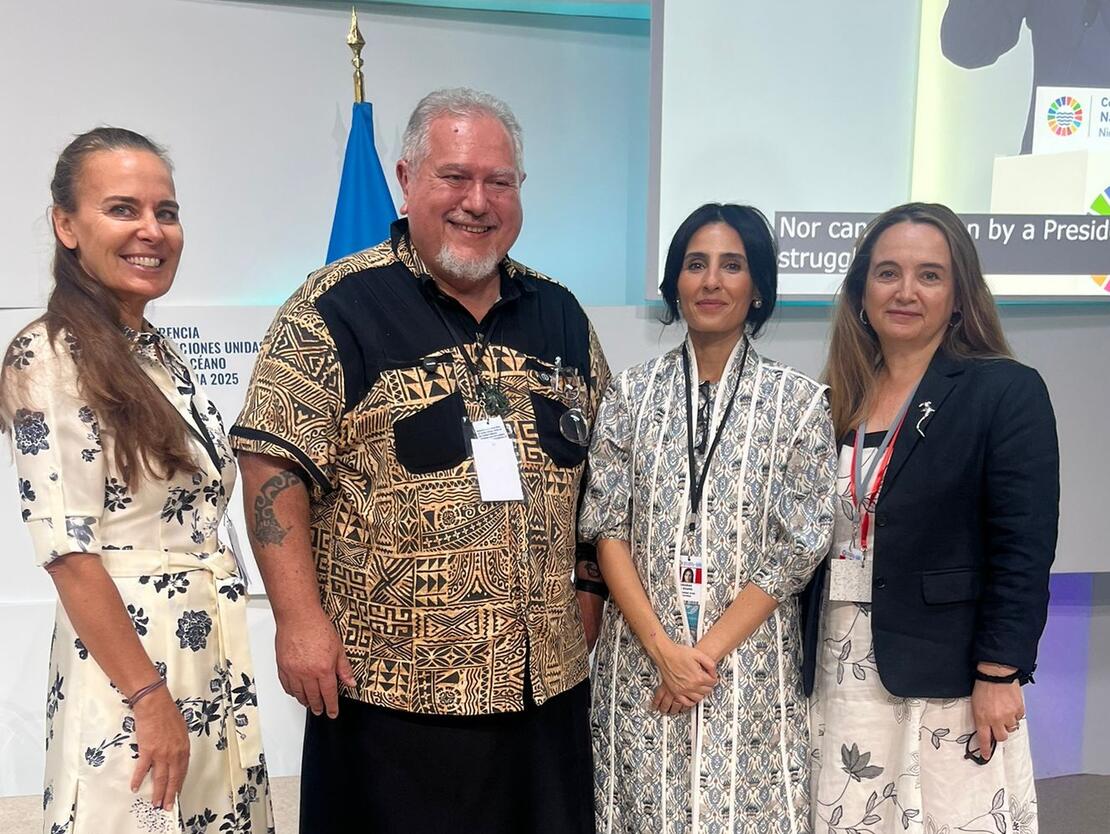Major breakthrough in marine conservation unveiled at UN Ocean Conference
Gland, Switzerland, 9 June 2025 (IUCN) – Speaking on the first day of the United Nations Ocean Conference (UNOC3) in France, President Moetai Brotherson of French Polynesia, announced the creation of the world’s largest Marine Protected Area (MPA). Encompassing the entire Exclusive Economic Zone of almost 5 million square kilometres, the commitment also includes 1.1 million square kilometres of highly or fully protected ocean.

From left: Dona Bertarelli, IUCN Patron of Nature; President Moetai Brotherson of French Polynesia; Her Excellency Razan Al Mubarak, IUCN President; Dr Grethel Aguilar, IUCN Director General.
Once implemented, the designation will safeguard 220,000 square kilometres (85,000 square miles) near the Society Islands and 680,000 square kilometres (263,000 square miles) near the Gambier Islands. In addition to these fully protected areas where all activity is prohibited, additional artisanal fishing zones will expand the overall protection to 1,086,000 square kilometres (nearly 420,000 square miles), an area around twice the size of continental France.
“This level of ambition is what the world needs to help turn the tide back in favour of a healthy and productive ocean. We applaud French Polynesia for its vision and hope this sets a new trend in the establishment of large scale highly protected MPAs,” said Her Excellency Razan Al Mubarak, IUCN President.
“This is an extraordinary achievement and a globally significant contribution to the protection of our One Ocean,” said Dr Grethel Aguilar, IUCN Director General. “By prioritising biodiversity, traditional knowledge, and future generations, French Polynesia has set a new standard for leadership in marine conservation. These commitments show that small Island territories can have a massive impact on global sustainability.”
Earlier this week, President Brotherson also committed to bolster conservation measures within the remainder of French Polynesia’s waters by including public participation in management, strengthening fisheries management plans, and banning deep-sea mining and drifting fish aggregating devices (FADs) (free-floating objects that commercial fishers commonly place in the open ocean to attract fish).
President Brotherson additionally pledged to add at least an additional 500,000 square kilometres (193,051 square miles) in new highly protected areas by World Ocean Day 2026.